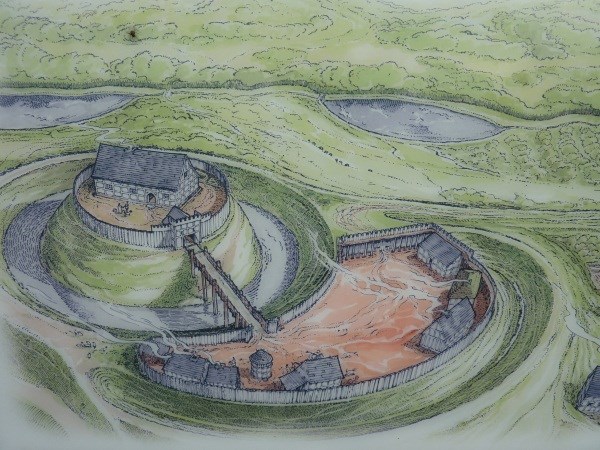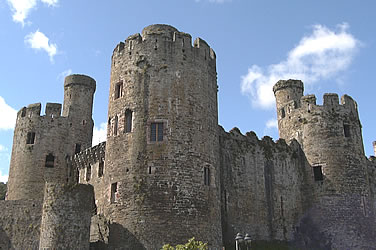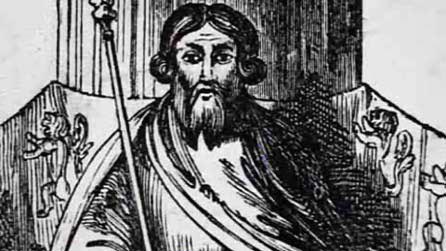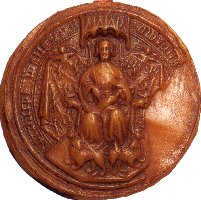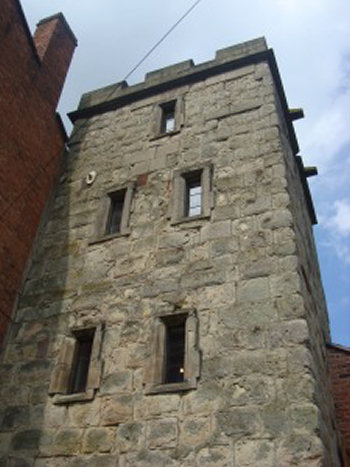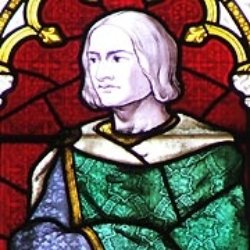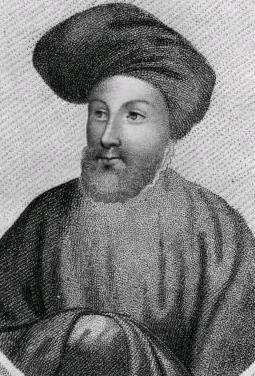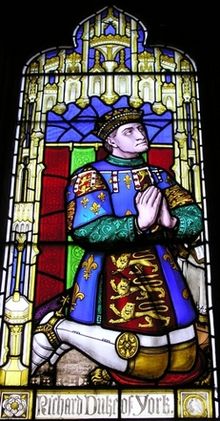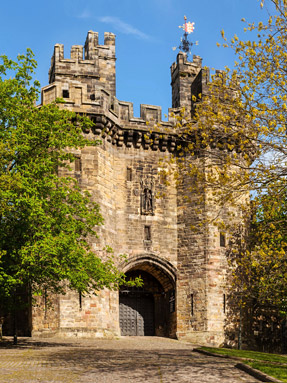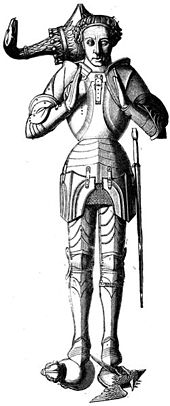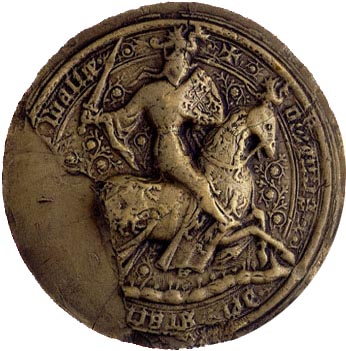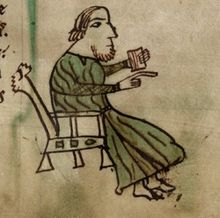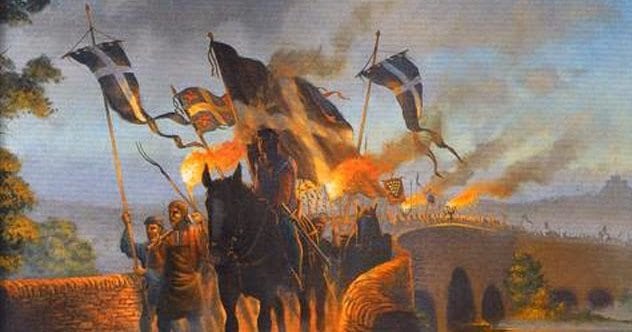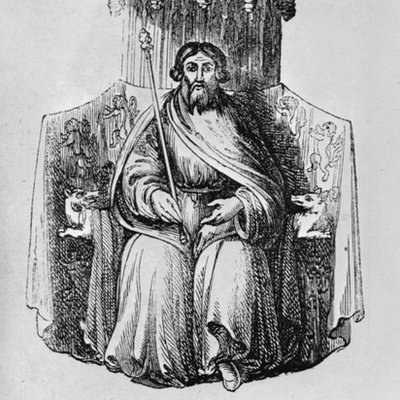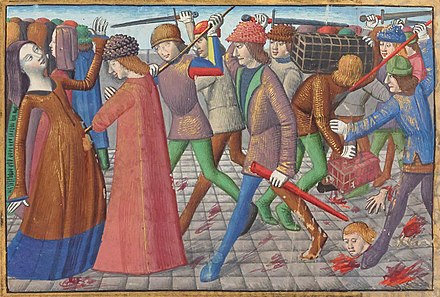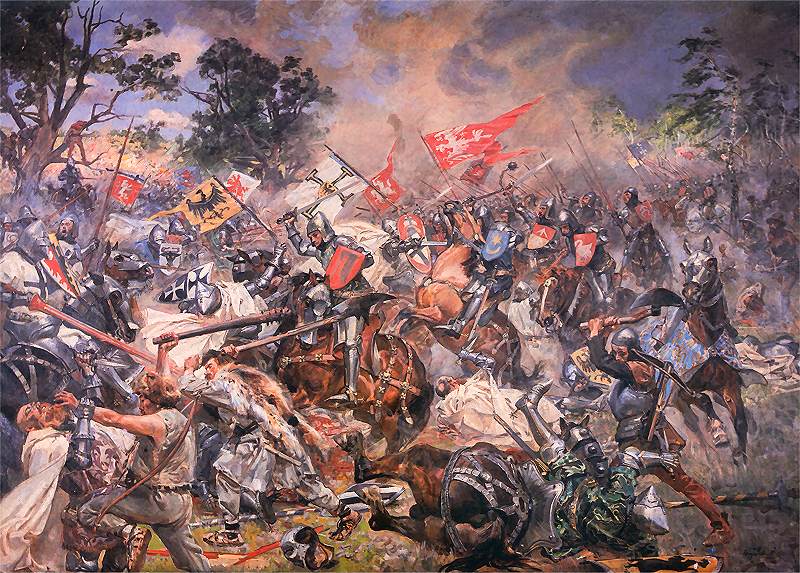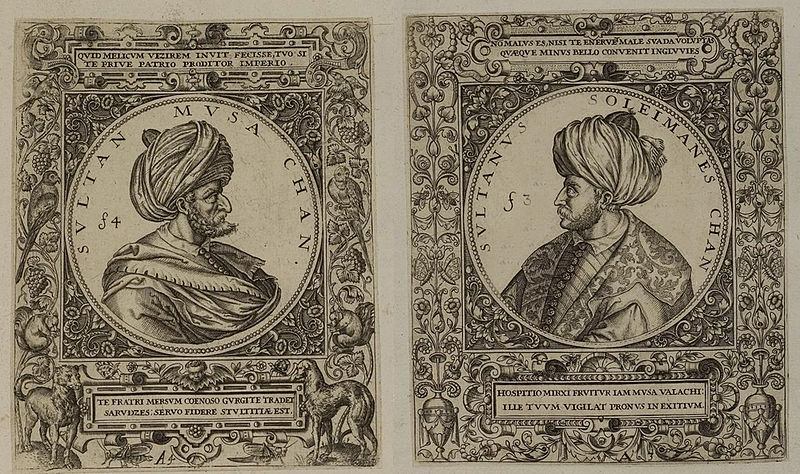Chapter 9: Glyndŵr’s Vision
The best written account of Owain I’s vision for his new Principality of Cymru[1] comes from the records kept of the Cynlliad Cymraeg, or Welsh Parliament, which date back to that very first meeting of the Cynlliad at Machylleth in 1404. The account they contain of the speech that Owain I made to assembled Welsh representatives at the Cynlliad in March 1407, which detailed Owain I’s plans for Wales, is surprisingly comprehensive, and this is testament to archiving work of the monks employed to keep the archives of the Cynlliad. Perhaps the most significant of Owain I’s policies related to the Welsh Church, which had long been dominated by the English. Not only did he plan on removing the English bishops of Wales from post and replacing them with Welsh clergy, as he had already done with the Bishop of Tyddewi[2] the records also reveal the first sign of his intention to realign the ecclesiastical loyalty of his Welsh principality to the French-backed Anti-Pope in Avignon, Benedict VIII. It is worth noting that this realignment of Wales’ ecclesiastical loyalty was somewhat inevitable, with Benedict VII being supported Owain I’s French allies. This realignment would be carried out for nothing in return, however, and, as revealed by a later letter written to Charles VI from Pennal (outside Machynlleth), Owain I demanded the confirmation of Owain I’s ecclesiastical appointments in Wales, the forgiving of the sins of those who had supported him in his war against Henry IV and the elevation of the bishopric of Tyddewi to an archbishopric to be at the head of the new Welsh church, which would include the dioceses of Llanelwy[3], Llandaff, Bangor and even Henffordd
[4]. In addition, Owain I also demanded, as a price for the loyalty of his new Wales, that all priests appointed to the principal offices of the Welsh Church understood Welsh and the restoration of monastic lands in Wales under the control of English and/or French monasteries to Welsh monasteries. Finally, Owain I insisted that Benedict VIII accord him the ecclesiastical privileges that had been given to his predecessors as Prince of Wales, as well as the recognition of his personal chapel. It might well strike the modern reader as strange that Owain I’s ambitions for Wales appeared to focus more on the ecclesiastical structure and loyalty of the Wales rather than the political realities of governance of the principality, but it must be remembered than in the 1400s the ecclesiastical and political went hand in hand and that the church was a hugely valuable tool for the kings and princes of Europe to assert their rule over their domains. For that reason, it should come as no surprise that Owain I, who was surrounded by clergy in his circle of supporters, focussed so much on the ecclesiastical future of the new principality in the setting out of his vision for Wales.
Chapter 10: The War of Three Kings
Whilst Owain I was beginning his rule of Wales in earnest, his English allies, the Mortimers and the Percys were continuing to fight the Lancasters in the continuation of Glyndŵr’s War that would come to be known as the War of Three Kings. The Lancasters controlled the largest domain as February 1407 began, with them and their supporters holding territory from London itself to their father’s old lands in the Duchy of Lancaster, the Percys were the next most powerful, in terms of land held, with much of the north-east under their rule from York, although Richard of Conisburgh, 3rd Earl of Cambridge and member of the Plantagenet House of York, still held several castles in the region, last but not least came the Mortimers who held only a few castles and estates in the west of England, but did have the candidate with, arguably, best claim to the English throne. So it was that the War of Three Kings began with the Mortimers moving on the Lancasters, who were on the ropes after the Battle of Caer[5], to secure some actual territory from which to build their campaign for the English throne and the Percys following suit against the Duchy of Lancaster.
The Mortimer campaign opened with Sir Edmund Mortimer marching his army, made up of an eclectic mix of French and Breton mercenaries, survivors from Henry IV’s army that fought at Caer who had deserted the Lancaster cause and even some of the townsfolk of Caer who had no wish to live under the rule of the Welsh, south through Swydd Caerlleon[6], where the Welsh were now going about establishing their control of the region, and into Staffordshire. At Blore Heath, near the new Welsh border, Sir Edmund Mortimer encountered a small force of Lancaster soldiers, under the command of Edward of Norwich, that had escaped from Caer. Seeing the possibility for an easy victory to bolster his cause, Sir Mortimer engaged the Lancaster army in battle and proceeded to rout the Lancaster force and capture Edward of Norwich, the head of the House of York and a former supporter of Richard II. Whilst this victory was of little significance, in and of itself, it boosted the morale of the Mortimers and gave them a prisoner of not inconsiderable importance. In addition, Sir Mortimer was able to discover that remaining survivors from the Lancaster army at Caer had retreated the Lancaster core territories in the Duchy of Lancaster under the command of Thomas I, the Lancaster candidate for the throne.
Emboldened by this news, the Mortimers marched onwards to take Stafford itself. This was an unusual target for Sir Mortimer to choose, not because of a lack of strategic value, though this was somewhat limited, but because it fell in the territory assigned to the Percys in the Tripartite Indenture, that Sir Mortimer had signed only two years previously in 1405. On the other hand, Stafford did represent a logical choice since it lay between the Mortimers and London and also as it was a fortified town somewhat close to the lands of Edmund I, as Earl of March, and thus represented a place from which to build their forces. Another positive was the fact that Stafford was only lightly garrisoned, after Henry IV had taken much of the garrison with him to the battlefield, and as such the Mortimer army set up camp outside Stafford with the hope of victory strong in their hearts and sent an ultimatum to the garrison of the town demanding their surrender. Initially the garrison was unwilling to surrender to the Mortimer forces until Edmund I, aged only 15, appeared before the town walls, the crown of Henry IV on his head and the Mortimer Royal Standard carried at his side by Thomas Montagu, 4th Earl of Salisbury. The people of Stafford had watched Richard II, who had named Edmund Mortimer, Earl of March, his heir presumptive, paraded through their town by victorious Lancaster soldiers back in 1399 and the appearance of Edmund I stirred the feeling of the townsfolk in a way that his uncle could not. Edmund I, despite his young age, appealed to the townsfolk to rise up against the treasonous Lancasters and throw wide the gates of Stafford to greet their new king. Whilst it is this appeal that caught the imagination of scholars of the time, it is far more likely that it was the arrival of Edward of Norwich, head of the House of York, by Edmund I’s side, most likely under duress, that convinced the garrison to give in and open the gates, thinking that even the Lancasters’ own family had deserted their cause. So it was, that the Mortimer army marched into Stafford all but unopposed and were able to begin their campaign for the throne in earnest.
In the north, meanwhile, the Percy army, which had emerged relatively unharmed from the Battle of Caer, set out from Caer on the 1st February to march north to attack the Lancaster holdings in the Duchy of Lancaster. As the Mortimers had already discovered, Thomas of Lancaster, now proclaimed as King Thomas I, was leading the Lancaster remnants into the Lancaster heartlands to rebuild and had crossed the Merswy
[7] only 2 days previously. Henry Percy and his army followed suit just under a week later and headed for the walled port town of Liverpool, a crucial port for the Lancasters to resupply their forces in the Duchy. Liverpool had the interesting fate of remaining in England but now being on the Welsh border, with only the Merswy estuary separating the people of Liverpool from the forces of Welsh. This somewhat inconvenient situation, made all the worst by both the disputes between Welsh and English fishermen over fishing rights and also the influx of English men, women and children fleeing across the Merswy from the Welsh, had created a climate of fear in the town and the Percys might well have been greeted with open arms had news not reached the people of Liverpool that the Percys had helped the Welsh cause. So it was that the inhabitants of Liverpool, despite being more or less abandoned by the Lancaster army, who were retreating north to Wigan and then Lancaster itself, organised themselves into an improvised army to defend the town against Henry Percy and his army.
As it turned out, however, Henry Percy would opt instead to split his army, with him personally leading one army onwards to Wigan in pursuit of the Thomas I and his army and his nephew Thomas Percy, Earl of Worcester, leading a smaller force to take Liverpool. This decision was not one of strategy, but rather one of arrogance, as Henry Percy could not, or would not, imagine an undefended town holding out against the Percy soldiers, which had been battle-hardened over the course of the Percys’ rising. Thus, Thomas Percy marched his small force westwards to, what he assumed would be, a simple victory whilst his uncle chased after the Lancasters. He reached Liverpool at the end of February and found a town whose hastily constructed earthworks, rather than being undefended, were manned by zealous townsfolk thirsting for revenge against the ones they saw as at least partially culpable for their current predicament. To make matters even worse for Thomas Percy and his men, the townsfolk, although poorly equipped and inexperienced, vastly outnumbered the Percy force and this served to embolden the townsfolk further. Thus, the townsfolk sallied forth from their earthworks to attack the Percy army. Fortunately for Thomas Percy and his soldiers, he had had the opportunity to put up some siege works and defences before the townsfolk attacked, but this was soon proved redundant as the townsfolk, armed with an assortment of weaponry, tools and improvised weapons, swarmed the minimal defences and the engaged in the Percy army in bitter hand-to-hand fighting. It swiftly became clear that Henry Percy’s somewhat rash decision to split his army had been ill-advised as Thomas Percy and his men were driven from the field by the savagery of the mob, with hundreds of left dead or dying behind them. The one silver lining for Thomas Percy was the receipt of news, once he and the remnant of his force had fled to a safe distance, that his uncle had marched into Wigan in the wake of the still retreating Lancaster army and taken the town, which had been, unlike Liverpool, undefended.
The people of Liverpool attacking the Percy army
Thus the early months of 1407 were ones of success for the Mortimers and Percys as the Lancasters still reeled from defeat at Caer. That said, the Lancaster cause was not lost as they, despite the gains made by the Percys and the Mortimers, still held the majority of their heartlands and the capital in London. Away from territorial matters, the capture of Edward of Norwich was a blow to the Lancasters as were the rumours that reached them of his defection to join the Mortimers.
[1] Wales
[2] St. David’s
[3] St. Asaph
[4] Hereford
[5] Chester
[6] Cheshire
[7] Mersey
___________________________
So we come to TTL's equivalent of the War of the Roses at last, whilst the Welsh start to get on with their lives in their new principality. As usual, feel free to comment and, more importantly, enjoy!
Gwyn



